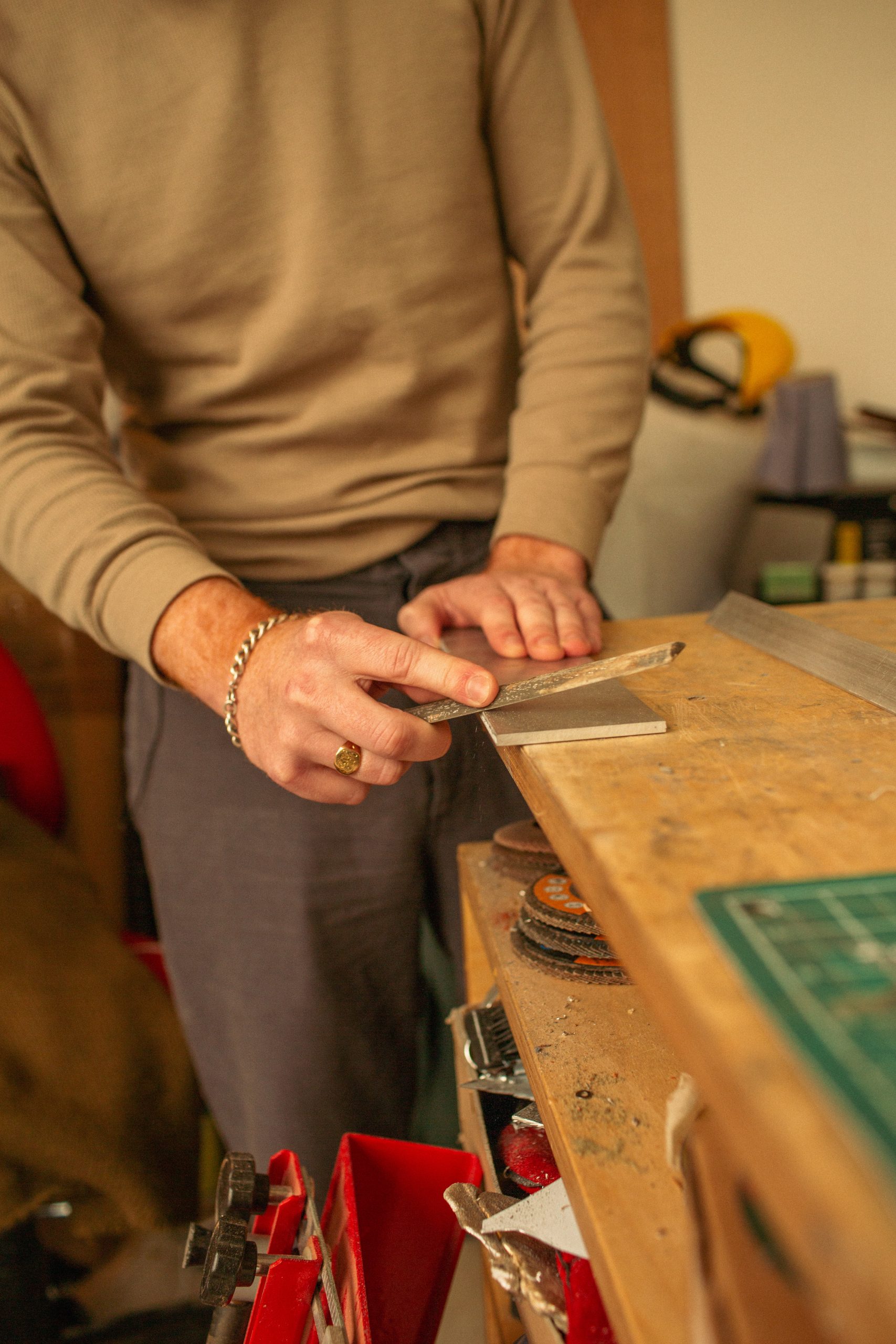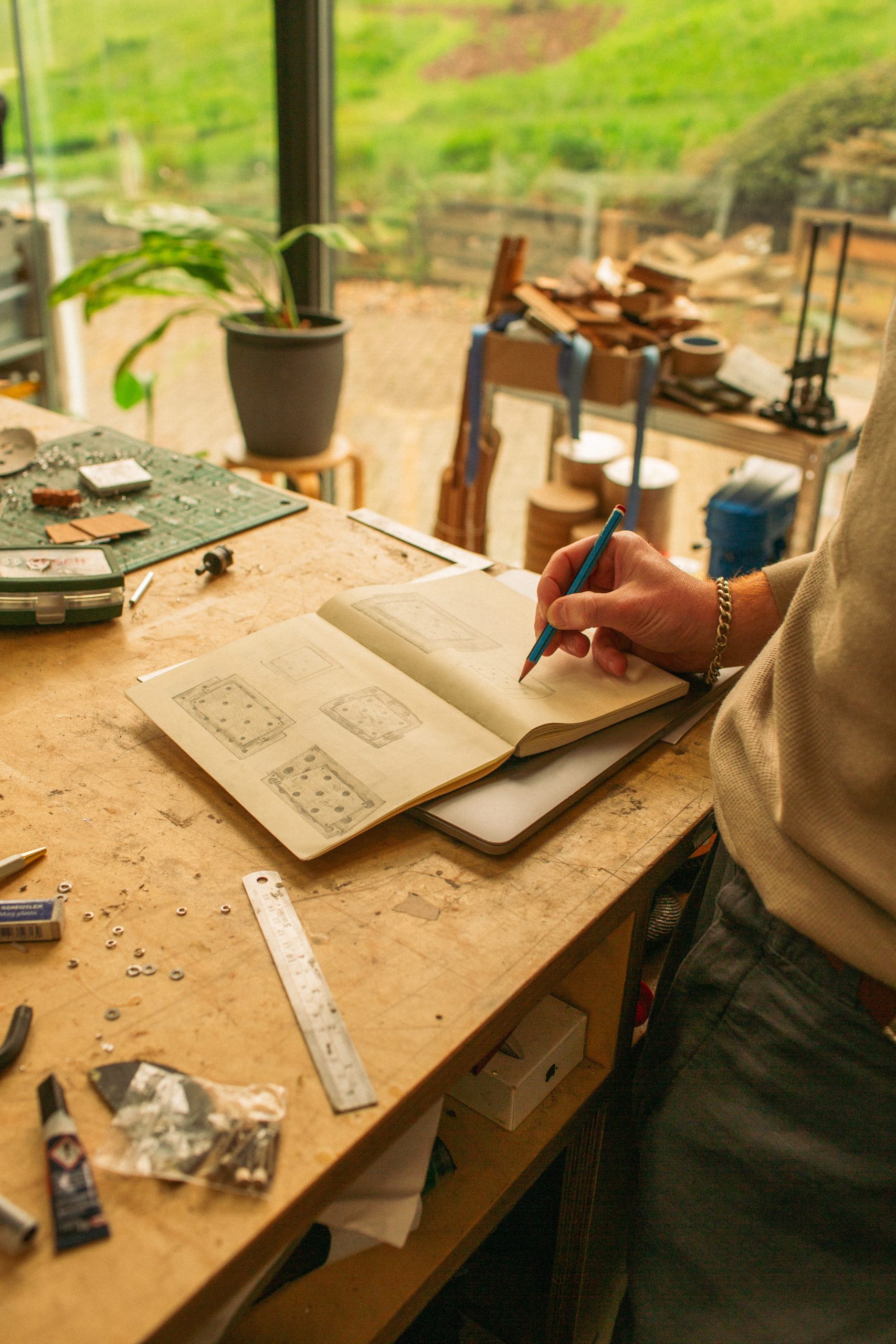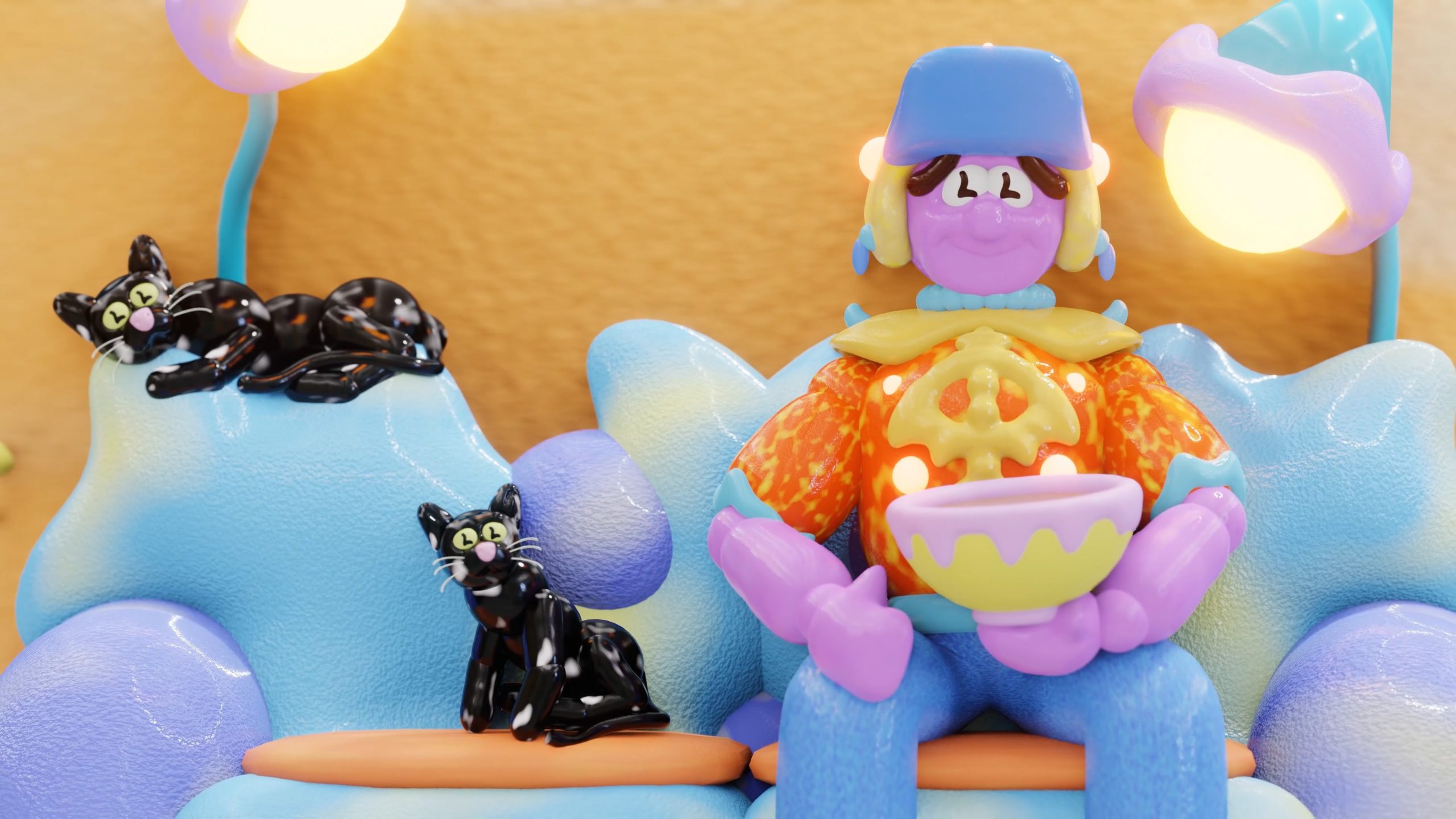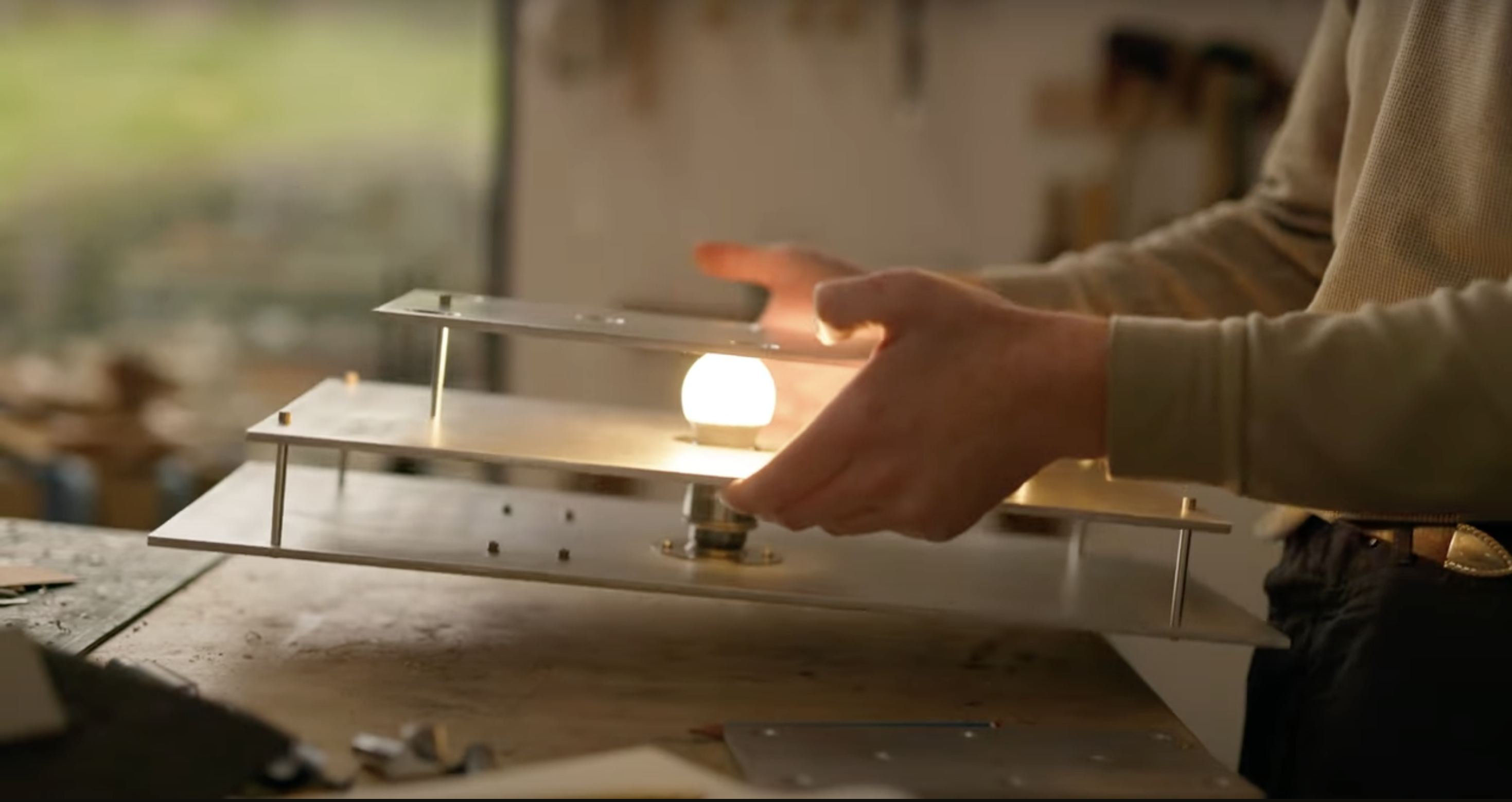Meet Lewis Kemmenoe, a furniture designer shaping the future of expression.
Mar 31, 2025
ShareAs part of our Home of Expression campaign, we commissioned 12 inspiring creatives who live, work and play in White City to create unique works that speak to the dynamic energy of the area. Here, furniture designer Lewis Kemmenoe muses on the materials and motifs that define his work.
With Television Centre’s iconic design as his starting point, Lewis was inspired to create a mid-century-style lighting sconce to reflect the graphic shapes and radial architecture of the building. Following his instincts to let the final piece reveal itself during the creative process, Lewis champions a fluid way of working that evolves from a singular source of inspiration.
Defined by functional objects that reflect both his personal development and concepts from extensive research, Lewis’s furniture and lighting designs each serve a purpose while operating as art forms in and of themselves. With a focus on materiality, his creations come to life in everything from timber and concrete, turned ash, Formica and aluminium. For this project, punctured sheets of metal scatter light from a futuristic lighting design that mirrors the façade of the BBC’s former home.
Armed with a BA in Fine Art from Central Saint Martins, and a Masters in Design from the Royal College of Art in White City, Lewis found his creative home at HQI in the Television Centre – a creative collective of artists’ studios with a community focus at its core. Whether sa,t falafel in hand, in Hammersmith Park’s calming surrounds, visiting bars and restaurants around Ladbroke Grove or frequenting White City House with friends, Lewis has made the area around Television Centre a place for play as well as work during the five years he has called the HQI studios his own.
After mounting his first solo show last year, and off the back of a group show in Barcelona, the artist continues to hone his craft and focus on future projects.

“ I was immediately drawn to those dots [on the surface of the building] and thinking how that could transform into a piece of furniture. It naturally evolved into a light, as the dots become a device for dispersing the light.”
How do furniture and art intersect?
“I describe myself fundamentally as a furniture designer, but within that sphere of slightly subversive, experimental furniture that has a purpose to it, but has another quality that can situate it in gallery spaces, too.”
How would you describe your creative expression?
“My personal style is predominantly led by the materials I’m working with on any particular project. My favourite material to work with is timber. I feel like I have a connection to the materiality of it, the different tones and grains and the organic nature – no one bit of timber is the same. I like to take man-made materials like metal and see how the two interact, how metal can be manipulated to have a more organic sense to it; soften it as a material to make it feel as if created by hand. There’s a playfulness in trying to manipulate how a material works – like casting aluminium to make it look like wood in some of my recent pieces.”
What inspires your pieces?
“I’m interested in the natural environment, in softer edges and creating work that’s evocative of a space. I often start with one place or scenario – Yosemite, for example, which then pulls up ideas of the California design scene and the timber that comes with that – letting things evolve from a starting point. I can draw influences from architecture, fashion or simply a palette.”

How did Television Centre influence your piece?
“I wanted to distil motifs from the building into the piece. I liked experimenting with mid-century elements that recall the architectural façade, as well as the organic circular nature of it. The building feels very iconic to me and brings up memories of watching the BBC as a kid. I was immediately drawn to those dots [on the surface of the building] and thinking how that could transform into a piece of furniture. It naturally evolved into a light, as the dots become a device for dispersing the light.
“The thing with creating lights is that the medium isn’t really the object you’re producing. You’re creating a vessel to carry a light source, so you’re designing around a singular concept, but within those parameters you can play with design motifs to create something that exists between furniture and art form.”


Next
 " alt="" data-parallax>
" alt="" data-parallax>
Sam Wood
Enter the world of illustrator and animator Sam Wood, where nothing is quite as it seems.
Read